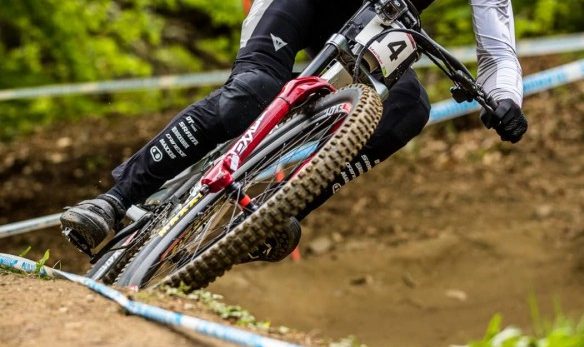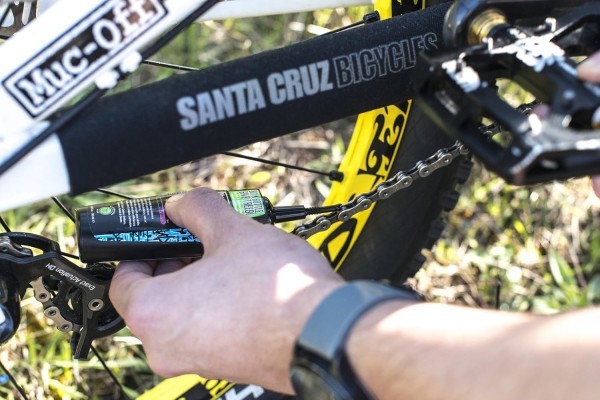Have you ever wondered if mountain bike tires truly last longer when ridden more frequently? The answer to this common belief might surprise you. Understanding the lifespan of your mountain bike tires is crucial for your safety and performance on the trails. From the type of terrain you ride on to the tire maintenance practices you follow, various factors can influence how long your tires will serve you well. Stay tuned to uncover the secrets to maximizing the longevity of your mountain bike tires and knowing when it’s time for a replacement.

1. Factors Affecting Tire Longevity
To maximize the lifespan of your mountain bike tires, understanding the key factors influencing their longevity is crucial. Proper tire pressure is paramount. Insufficient pressure can lead to increased wear due to excessive flexing, while over-inflation can cause a harsh ride and decreased traction.
Tire compound is another critical factor. Softer compounds provide better grip but wear faster, whereas harder compounds have increased longevity but may sacrifice traction. The terrain you ride on significantly impacts tire wear. Rough, rocky trails will wear down tires quicker than smoother, packed trails.
Additionally, your riding style plays a role. Aggressive riding, such as hard braking and sharp turns, accelerates tire wear. By considering these factors, you can optimize the lifespan of your mountain bike tires and enhance your riding experience.
2. Signs of Wear and Tear
Understanding the signs of wear and tear on your mountain bike tires is crucial for maintaining optimal performance and safety on the trails. Look for visible tread wear indicators that show the tire is reaching the end of its lifespan. Check for cuts, tears, or punctures on the tire surface, as these can compromise its integrity.
Inspect the sidewalls for any cracking, bulges, or deformities, that could indicate structural weakness. Pay attention to any loss of air pressure that occurs more frequently, as it may signal a leak or damage. Additionally, uneven wear patterns can suggest issues with tire pressure, suspension setup, or riding style.
Regularly examining your mountain bike tires for these signs can help prevent unexpected failures and ensure a smoother riding experience.
3. Maintenance Tips for Extended Lifespan
For the prolonged durability of your mountain bike tires, implement a routine maintenance schedule. Regularly inspect the tire pressure, ensuring it matches the manufacturer’s recommendations.
Check for any cuts, cracks, or bulges on the tire surface, as these can lead to potential failures. Clean your tires with a mild soap and water solution to remove debris that could cause premature wear.
Lubricate the tire beads to prevent them from drying out and cracking. Rotate your tires periodically to promote even wear across all treads.
Store your bike in a cool, dry place away from direct sunlight when not in use. Following these maintenance tips will extend the lifespan of your mountain bike tires, ensuring optimal performance on your rides.
4. When to Replace Mountain Bike Tires
Inspect your mountain bike tires regularly for signs of wear and tear to determine when replacement is necessary. Here are four key indicators to help you know when it’s time to get new tires:
- Tread Depth: Measure the depth of the tire tread using a coin or tread depth gauge. When it reaches 2mm or less, it’s time to replace the tire.
- Cracks and Cuts: Check for any visible cracks, cuts, or slices on the tire surface. These can weaken the tire’s structure and lead to punctures.
- Bulges or Blisters: Inspect the sidewalls for any bulges or blisters, indicating internal damage. Replace the tire if you notice these deformities.
- Consistent Punctures: If you experience multiple punctures despite repairing them, it might be a sign that the tire is no longer holding up well.
5. Choosing the Right Replacement Tires
Regularly assessing your riding style and terrain can guide you in selecting the most suitable replacement tires for your mountain bike. Consider the type of terrain you ride on most frequently – whether it’s rocky, muddy, or smooth trails. Opt for tires with tread patterns that match these conditions to maximize performance and grip.
If you’re into downhill or enduro riding, prioritize tires with aggressive tread patterns and durable sidewalls for better stability and protection against impacts. For cross-country riders, lightweight and fast-rolling tires are essential to maintain speed and efficiency.
Additionally, choosing the right tire width is crucial – wider tires provide more traction and stability, while narrower tires offer lower rolling resistance for smoother rides.
Frequently Asked Questions
Can Mountain Bike Tires Be Patched or Repaired When They Get a Puncture or Tear?
Yes, mountain bike tires can often be patched or repaired when they sustain a puncture or tear. This process involves identifying the damage, cleaning the area, applying a patch or sealant, and ensuring proper inflation for continued use.
How Often Should Tubeless Sealant Be Refreshed in Mountain Bike Tires?
To maintain optimal tire performance, refresh the tubeless sealant every 3-6 months. Check for dry sealant or diminished effectiveness. Proper maintenance ensures continuous protection against punctures and maintains tire pressure stability for a smooth ride on your mountain bike.
Are There Any Specific Tire Brands or Models Known for Their Durability and Longevity?
When it comes to durability and longevity, specific tire brands like Maxxis, Schwalbe, and Continental stand out. Their robust construction and advanced compounds make them reliable companions on challenging trails, ensuring you ride with confidence.
What Impact Does Riding on Different Types of Terrain Have on the Lifespan of Mountain Bike Tires?
Riding on various terrains affects mountain bike tires differently. Rocky trails lead to quicker wear, while smoother paths extend tire life. Adjusting tire pressure for each terrain can optimize performance and durability, ensuring you get the most out of your ride.
Is It Necessary to Rotate or Switch the Front and Rear Tires to Even Out Wear and Tear?
To maintain optimal performance and extend tire lifespan, rotating or switching front and rear tires is necessary. This practice evens out wear and tear, ensuring balanced performance and safety on various terrains. Follow this routine for peak efficiency.
Conclusion
Mountain bike tires typically last around 600-1200 miles, depending on factors such as terrain, riding style, and maintenance. One interesting statistic to consider is that properly inflated tires can last up to 50% longer than underinflated ones. By following proper maintenance practices and monitoring signs of wear, you can ensure your tires reach their maximum lifespan and performance.





